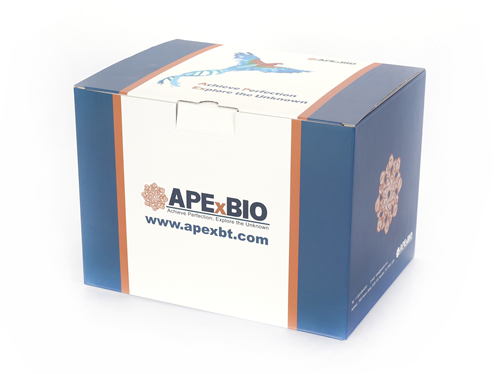- Home
- Signaling Pathways
- Neuroscience
- Gap Junction
- Carbenoxolone disodium
Carbenoxolone disodium
Carbenoxolone disodium is an inhibitor of 11β-hydroxysteroid dehydrogenase (11β-HSD) [1].
11β-HSD is a family of enzymes that regulating the access of glucocorticoids to the steroid receptors.
In bovine aortic endothelial cells (BAEC), carbenoxolone disodium can block gap junction communication (GJC) and modulates Cx43 expression, which based on junctional patency [2].
Carbenoxolone disodium is an inhibitor of 11β-HSD and causes hypokalemia and hypernatremia. In male rats, 11β-HSD was inhibited in the liver, kidney, pituitary, hippocampus, hypothalamus and amygdala 1h after intraperitoneal administration of CX (100 mg/kg). Injection of CX (1.5mg/kg) into the 3rd ventricle inhibited corticosterone to 11-dehydrocorticosterone by 11-HSD in the hippocampus and pituitary and produced behavioral hyperactivity, while had no effect in the liver or kidney. Injection of CX (10-50ug/rat) into intracerebroventricularly inhibited 11β-HSD differentially in the hypothalamus and hippocampus [1]. These results show that low doses of CX can alter the activity of 11β-HSD in specific brain regions without affecting its activity in peripheral tissues, and only marginally in the pituitary, provides a method to study the central role of this enzyme.
References:
[1].? Jellinck PH, Monder C, McEwen BS, et al. Differential inhibition of 11 beta-hydroxysteroid dehydrogenase by carbenoxolone in rat brain regions and peripheral tissues. J Steroid Biochem Mol Biol, 1993, 46(2): 209-213.
[2].? Sagar GD, Larson DM. Carbenoxolone inhibits junctional trasnfer and upregulates connexin43 expression by a protein kinase A-dependent pathway. J Cell Biochem, 2006, 98(6): 1543-1551.
- 1. Rotenberg MY, Yamamoto N, et al. "Living myofibroblast-silicon composites for probing electrical coupling in cardiac systems." Proc Natl Acad Sci U S A. 2019 Oct 17. pii: 201913651. PMID:31624124
- 2. Zhou L, Liu C, et al. "Pannexin-1 is involved in neuronal apoptosis and degeneration in experimental intracerebral hemorrhage in rats." Mol Med Rep. 2018 Apr;17(4):5684-5691. PMID:29484398
| Physical Appearance | A solid |
| Storage | Store at -20°C |
| M.Wt | 614.72 |
| Cas No. | 7421-40-1 |
| Formula | C34H48Na2O7 |
| Solubility | ≥30.74 mg/mL in DMSO; ≥39.1 mg/mL in EtOH; ≥55.1 mg/mL in H2O |
| Chemical Name | disodium;10-(3-carboxylatopropanoyloxy)-2,4a,6a,6b,9,9,12a-heptamethyl-13-oxo-3,4,5,6,6a,7,8,8a,10,11,12,14b-dodecahydro-1H-picene-2-carboxylate |
| SDF | Download SDF |
| Canonical SMILES | CC1(C2CCC3(C(C2(CCC1OC(=O)CCC(=O)[O-])C)C(=O)C=C4C3(CCC5(C4CC(CC5)(C)C(=O)[O-])C)C)C)C.[Na+].[Na+] |
| Shipping Condition | Small Molecules with Blue Ice, Modified Nucleotides with Dry Ice. |
| General tips | We do not recommend long-term storage for the solution, please use it up soon. |
Quality Control & MSDS
- View current batch:
Chemical structure

Related Biological Data












